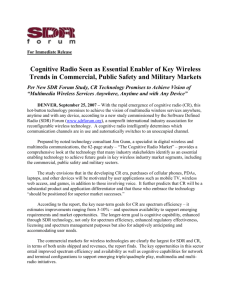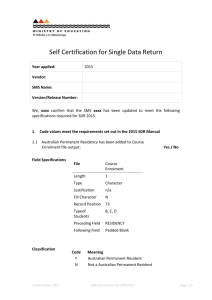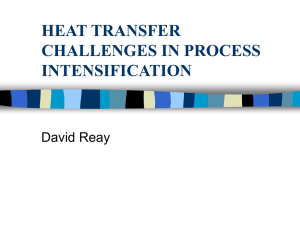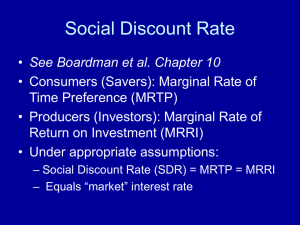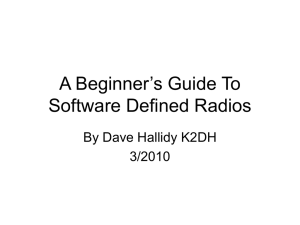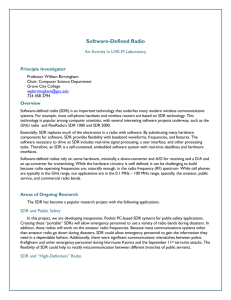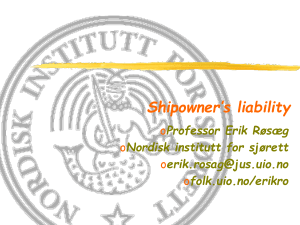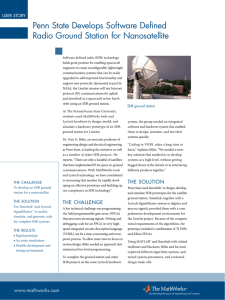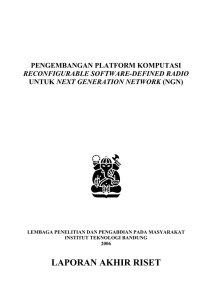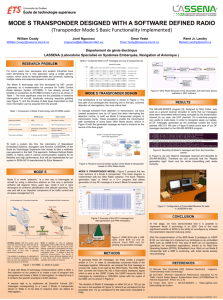Study Reveals Growing Need for Interoperable Radio
advertisement
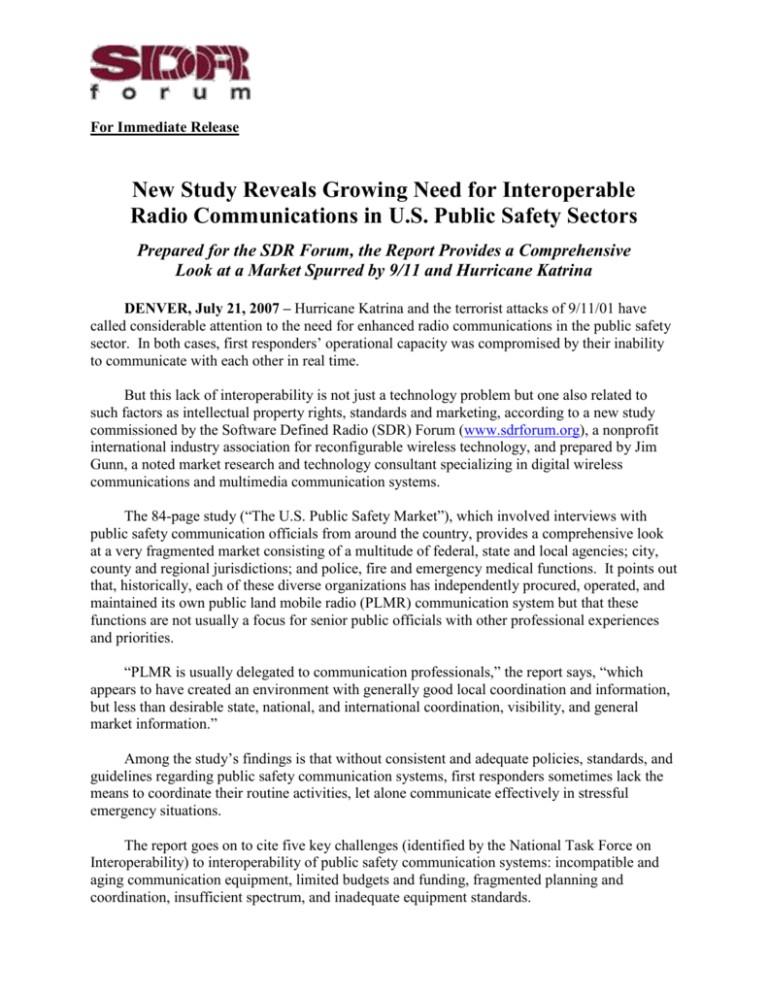
For Immediate Release New Study Reveals Growing Need for Interoperable Radio Communications in U.S. Public Safety Sectors Prepared for the SDR Forum, the Report Provides a Comprehensive Look at a Market Spurred by 9/11 and Hurricane Katrina DENVER, July 21, 2007 – Hurricane Katrina and the terrorist attacks of 9/11/01 have called considerable attention to the need for enhanced radio communications in the public safety sector. In both cases, first responders’ operational capacity was compromised by their inability to communicate with each other in real time. But this lack of interoperability is not just a technology problem but one also related to such factors as intellectual property rights, standards and marketing, according to a new study commissioned by the Software Defined Radio (SDR) Forum (www.sdrforum.org), a nonprofit international industry association for reconfigurable wireless technology, and prepared by Jim Gunn, a noted market research and technology consultant specializing in digital wireless communications and multimedia communication systems. The 84-page study (“The U.S. Public Safety Market”), which involved interviews with public safety communication officials from around the country, provides a comprehensive look at a very fragmented market consisting of a multitude of federal, state and local agencies; city, county and regional jurisdictions; and police, fire and emergency medical functions. It points out that, historically, each of these diverse organizations has independently procured, operated, and maintained its own public land mobile radio (PLMR) communication system but that these functions are not usually a focus for senior public officials with other professional experiences and priorities. “PLMR is usually delegated to communication professionals,” the report says, “which appears to have created an environment with generally good local coordination and information, but less than desirable state, national, and international coordination, visibility, and general market information.” Among the study’s findings is that without consistent and adequate policies, standards, and guidelines regarding public safety communication systems, first responders sometimes lack the means to coordinate their routine activities, let alone communicate effectively in stressful emergency situations. The report goes on to cite five key challenges (identified by the National Task Force on Interoperability) to interoperability of public safety communication systems: incompatible and aging communication equipment, limited budgets and funding, fragmented planning and coordination, insufficient spectrum, and inadequate equipment standards. Some of these challenges, the study notes, fall within the realm of SDR’s potential. For example, recent advances in semiconductor, RF and data acquisition technologies provide imminent market opportunities for SDR to extend programmability for more transceiver algorithms and to more extensively achieve the technology’s long-verified benefits, such as lower development costs and enhanced flexibility in developing, customizing and deploying fielded products. SDR concepts and features, the report points out, are already being used in most fielded products and are benefiting vendors by enabling reduced time-to-market as well as flexibility for incorporating new and emerging functionalities. SDR features are also addressing standards inadequacies, such as slow progress in the completion of P25 – a suite of digital radio communication standards for federal, state and local public safety agencies – that is hindering multi-vendor interoperability. The study also cites an existing need to accommodate non-standard functions in a standard way, supplementing a core set of common functions – concluding that the current SDR Forum activities on languages seem well targeted to support this goal. Issues of intellectual property rights and other details must be addressed as well, it adds, but “these appear achievable with SDR technologies.” More information is available by contacting info@sdrforum.org. # # # About the SDR Forum Established in 1996, the SDR Forum is a nonprofit international industry association dedicated to supporting the development and deployment of software defined radio systems that enable flexible and adaptable architectures in advanced wireless systems. Currently numbering some 100 organizations, the Forum’s membership spans commercial, defense and civil government organizations, including wireless service providers, network operators, component and equipment manufacturers, hardware and software developers, regulatory agencies, and academia from Asia, Europe, and North America. The SDR Forum’s administrative office is headquartered in Denver. Editorial Contacts Allan Margulies, SDR Forum, 303-628-5461, asm@sdrforum.org or Neal Leavitt, Leavitt Communications, 760-639-2900 or 760-212-9112, neal@leavcom.com

